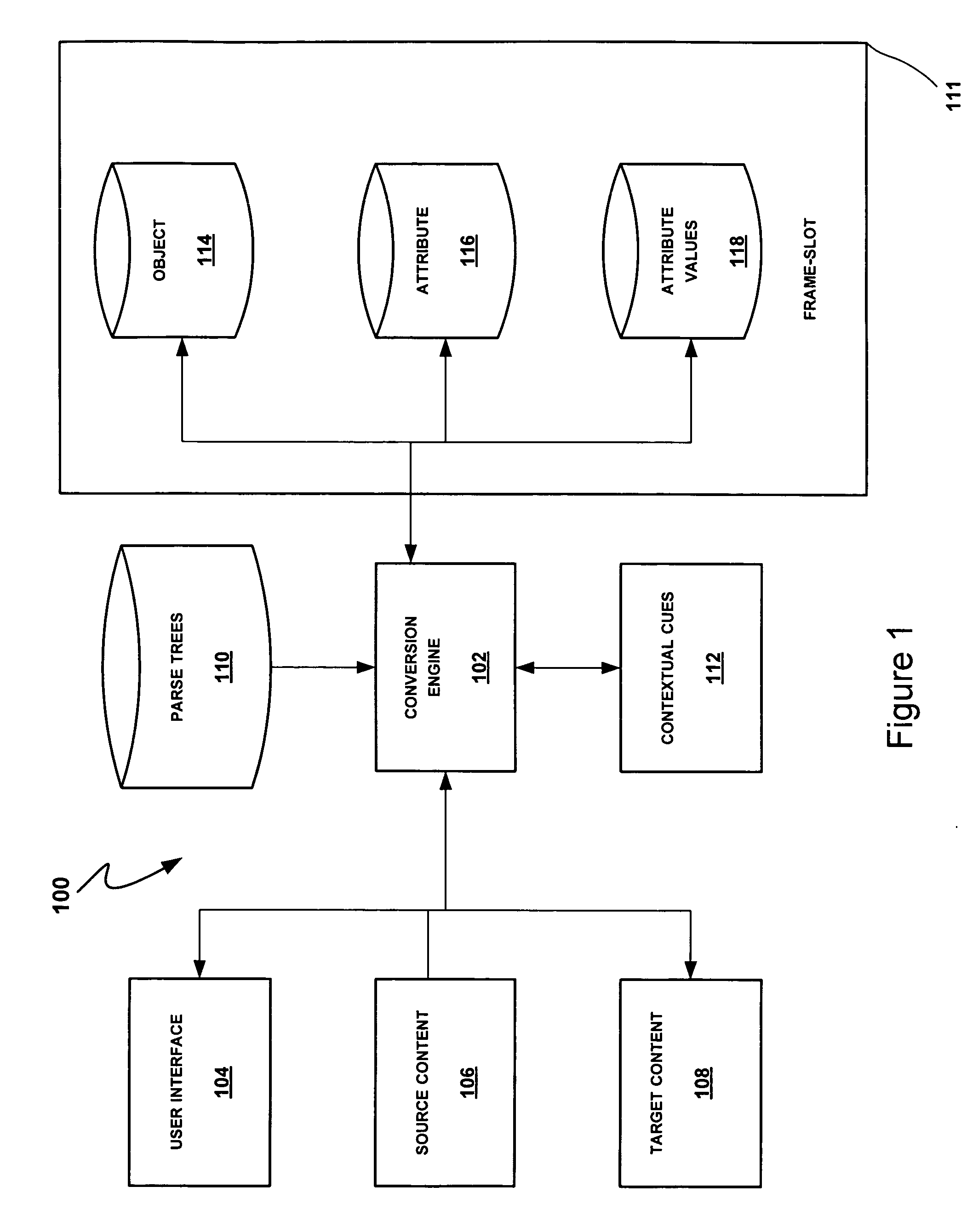Frame-slot architecture for data conversion
a data conversion and frame-slot technology, applied in the field of machine-based tools, can solve the problems of requiring substantial effort and processing resources to develop and implement, affecting the efficiency of taxonomies, and requiring substantial effort and processing resources to adapt structures to a new conversion environment or to reuse rules and structures as may be desired, so as to achieve substantial reduction of start-up efforts and costs
- Summary
- Abstract
- Description
- Claims
- Application Information
AI Technical Summary
Benefits of technology
Problems solved by technology
Method used
Image
Examples
Embodiment Construction
[0031] The present invention relates to converting data from a first or source form to a second or target form. As noted above, such conversions may be desired in a variety of contexts relating, for example, to importing data into or otherwise populating an information system, processing a search query, exchanging information between information systems and translation. In the following description, the invention is set forth in the context of particular examples relating to processing a source stream including a product oriented attribute phrase. Such streams may include information identifying a product or product type together with a specification of one or more attributes and associated attribute values. For example, the source stream (e.g., a search query or product descriptor from a legacy information system) may include the content “8 oz. ceramic coffee cup.” In this case, the product may be defined by the phrase “coffee cup” and the implicit attributes of size and material h...
PUM
 Login to View More
Login to View More Abstract
Description
Claims
Application Information
 Login to View More
Login to View More - R&D
- Intellectual Property
- Life Sciences
- Materials
- Tech Scout
- Unparalleled Data Quality
- Higher Quality Content
- 60% Fewer Hallucinations
Browse by: Latest US Patents, China's latest patents, Technical Efficacy Thesaurus, Application Domain, Technology Topic, Popular Technical Reports.
© 2025 PatSnap. All rights reserved.Legal|Privacy policy|Modern Slavery Act Transparency Statement|Sitemap|About US| Contact US: help@patsnap.com



